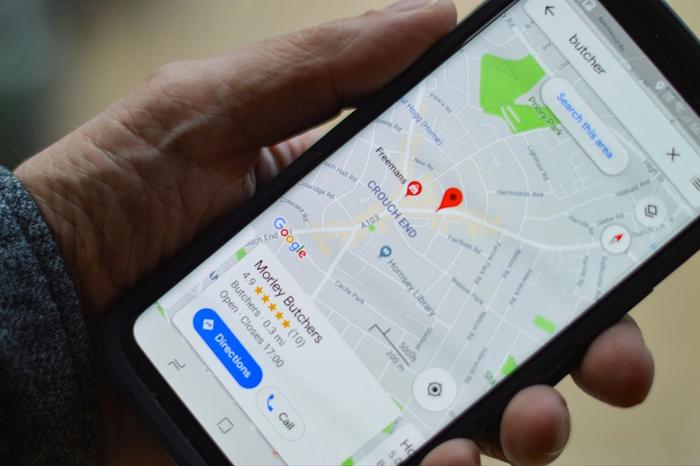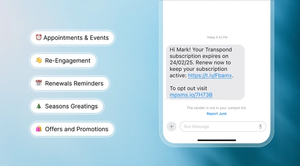Customers searching for local businesses online behave just like customers walking in a shopping mall - they're ready to buy, but if they can't find you, they'll head to your competition.
That's where local SEO comes in. It puts your business on the map in local search results like Google Maps and listings, ensuring you're visible to potential customers looking for what you offer.
In a digitally driven market, standing out online is not just beneficial, it’s essential. Local search engine optimization (SEO) enhances how businesses present themselves online to a geo-specific target audience. This helps them appear prominently in the search results most relevant to their immediate consumer base.
But local SEO isn’t just about topping search results in your vicinity, it’s about establishing a visible, engaging presence that resonates with a community.
Purpose of local SEO
Local SEO is the strategic process of optimizing your business’s digital properties to attract more business from relevant local searches.
These searches take place on Google and other search engines, making local SEO crucial for businesses that operate on a regional scale.
By focusing on specific towns, cities, regions, and even states, businesses can cater more effectively to their local consumer base, driving increased foot traffic and online sales.
Do I need local SEO?
While local SEO is indispensable for small to medium-sized local businesses aiming to outshine competitors in their area, it's also important for larger corporations. Such entities often need to connect with specific local markets for promotions, new openings, or community engagement initiatives. Therefore, no matter the size of your business, geographical relevance matters.
As we delve deeper, this guide will explore the nuances of setting up a robust local SEO framework, from establishing a compelling Google Business Profile to implementing local backlinks and engaging with relevant communities. We’ll also look into effective strategies for monitoring and enhancing your local SEO efforts. Get ready to transform your local marketing strategies into a streamlined process that delivers results.
Definition and importance
Local SEO is an essential component of digital marketing and its importance has surged with the increase in mobile internet access and local search queries. Distinguishing itself from broader SEO strategies, local SEO targets geographical queries and helps businesses connect with searchers in their immediate area. This can significantly affect your business's visibility and bottom line by bringing your services and products to the forefront when and where customers are searching.

Key components of local SEO
Local SEO might seem complex, but it boils down to a few key factors that influence how your business shows up in local search results. Let’s explore these in more detail:
Claiming and optimizing your Google Business Profile
Formerly known as Google My Business, this is your golden ticket to local SEO success. A complete and informative Google Business Profile increases your visibility and allows customers to find crucial details like your address, phone number, website and customer reviews.
Building citations
Citations are essentially online mentions of your business name, address, and phone number (NAP) across various directories and websites. The more consistent and accurate your NAP citations are, the better your local SEO ranking will be.
Optimizing your website for local search
This involves incorporating relevant location-specific keywords throughout your website content, including titles, meta descriptions, and page copy. Additionally, ensuring your website is mobile-friendly is crucial for a positive user experience, which can also impact local SEO.
Positive online reviews
Customer reviews are like gold for local SEO. Not only do they build trust and credibility with potential customers, but positive reviews can also boost your ranking in local search results.
Building a strong foundation for local SEO
Claiming and optimizing your Google Business Profile is the cornerstone of local SEO, even for national businesses with multiple locations. It's a free and easy way to manage your online presence across Google Search and Maps, making it easier for potential customers to find you.
Below is a step-by-step guide on claiming and verifying your Google Business Profile for each relevant location.
- Visit https://www.google.com/business/ and sign in with your Google Business Profile account (or create one if you don't have one).
- Click "Add a business" and enter your business name.
- Choose the category that best describes your business.
- Enter your complete business address, including suite or floor number if applicable. Important: Make sure this address matches exactly how it appears on your website and other online listings.
- Select the service area where you serve customers. This could be your physical location, a delivery radius, or a remote service area.
- Add your phone number and website URL.
- Verify your business location by phone, postcard, email or another method if offered.
Filling out the rest of your information
Below, we’ve listed what information you should fill out completely for maximum impact.
- Business name: Ensure your business name matches your website and other listings exactly.
- Address: Include your complete address.
- Phone number: List the local phone number where customers can reach you.
- Category selection: Choose the most relevant category that accurately describes your business.
- High-quality photos: Include high-resolution photos showcasing your business, staff, products or services. Encourage customers to upload photos as well.
- Accurate business hours: Keep your listed hours up-to-date to avoid frustrating customers who show up when you're closed.
Optimizing your Google Business Profile for maximum impact
To optimize your Google My Business profile for better ranking and user experience, you should ask satisfied customers to leave a review on your Google My Business profile.
Take the time to respond to all reviews, both positive and negative. Thank customers for their kind words and address any concerns raised in negative reviews promptly and professionally.
Keep your profile fresh by regularly updating it with new content. This could include new services you offer, special promotions, or upcoming events.
Use the Q&A feature to directly answer customer inquiries about your business, products or services and include clear, concise, and informative descriptions of your business and the services you offer.
Developing a local SEO strategy
Researching local keywords
Effective local keyword research is foundational in tailoring your SEO efforts to your geographic market. Some tools you may consider include Google Keyword Planner. This tool provides data on search volume and competition for keywords, including geo-specific modifiers.
Google Trends lets you understand local search trends and seasonal variations in keyword popularity.
Local autocomplete involves simply typing relevant terms into Google’s search bar and noting the autocomplete suggestions, as this can provide insight into common local search queries.
Finally undertake competitor analysis so you can look at what keywords your local competitors are targeting, and consider how you can differentiate or improve upon their strategies.

Content creation for local audiences
Creating content that’s relevant to local audiences involves more than just using local keywords.
Show you understand the community by incorporating local colloquialisms, referencing well-known landmarks, or mentioning recent news stories. This creates a sense of familiarity and makes your content more engaging.
People are interested in what's happening around them. Write blog posts or create social media content about upcoming community events, local festivals, or charitable initiatives your business supports. This demonstrates you're invested in the community and positions your business as a local partner.
Engage with local forums, Facebook groups, or Twitter to see what topics and words are trending in your area. This grassroots approach can uncover niche terms not immediately obvious through traditional keyword tools.
Occasionally, direct feedback from customers via surveys or feedback forms can highlight the specific terms and services they associate with your business.
Including insights from respected local figures can lend credibility and interest to your content, making it more shareable and valued within the community.
Showcase how your products or services have solved problems for local customers. This not only illustrates your business’s value but also enhances local relevance.
Conduct local keyword research to identify common pain points or questions people in your area have. Create content that addresses these specific issues and offers valuable solutions.
With the rise of mobile and voice search, consider how people ask questions differently when speaking rather than typing. Tailor your keywords to match the conversational language used in voice searches.
On-page optimization techniques
Optimizing your on-page elements is crucial for boosting your local search rankings.
Include relevant local keywords naturally within your title tags and meta descriptions. These are like mini-advertisements for your web pages in search results, so make sure they're informative and enticing for local users.
Also, structure your content using clear and concise headers (H1, H2, H3). Incorporate location-specific keywords where appropriate throughout your headers to improve topical relevance.Don't forget about image optimization. Ensure your website images have descriptive file names that include relevant keywords. Additionally, use alt text to describe the image content and incorporate local keywords where possible. This helps search engines understand your image content and can improve your website's visibility in image search results.
Implement schema markup on your website to help search engines better understand the local relevance of your content. This can include schema types like "LocalBusiness", "Event" and "Place" to enhance visibility in rich snippets and local search packs.
If you operate in multiple locations, create dedicated landing pages for each locale. Ensure these pages are rich with local content, from customer testimonials specific to the region to galleries of local events, or offers specific to the area.
Craft clear and descriptive URLs that incorporate relevant location keywords. Include city or region names whenever applicable to clearly signal local relevance to search engines and users.
Given the importance of mobile devices in local searches, ensure that your site is fully responsive and loads quickly on all devices. This increases the likelihood of engagement and conversions from local visitors.
Focusing on these areas will ensure your on-page SEO contributes positively to your overall local SEO efforts, making your business more prominent and relevant to the local community.
Techniques to avoid duplicate listings
Duplicate listings can be a major roadblock to local SEO success. When search engines find multiple listings for the same business, it can lead to confusion and hinder your visibility in local search results.
Duplicate listings can hurt your local SEO ranking in a few ways. Search engines may not know which listing to prioritize, potentially leading them to display irrelevant information to users searching for your business. Additionally, having inconsistent information across multiple listings can damage your credibility and confuse potential customers.
To maintain a clean online presence, it's crucial to monitor for duplicate listings across various directories, with a particular focus on listings within your target location. There are free and paid tools available to help you with this task.
If you discover duplicate listings, take action to remove or correct them. Many directories allow you to claim and manage your listing directly. For duplicates on other platforms, contact the directory owner through their website or support channels. Be polite and professional, and provide clear information about the duplicate listing, including the correct details.
By staying vigilant and taking proactive steps to address duplicate listings, you can ensure your business information is accurate and consistent across the web, ultimately improving your local SEO performance.
Leveraging local backlinks and citations
The importance of backlinks and citations
Backlinks and citations are crucial elements of local SEO. A backlink is a link from one website to another, while a citation is a mention of your business on another site, often in directories or local business listings, which includes your business name, address, and phone number (NAP). For local businesses, acquiring backlinks and citations from reputable local sources can significantly boost search engine trust and visibility.

What do local backlinks help with?
These indicate to search engines that your business is a valid part of the local community. High-quality local backlinks can increase your site’s authority and improve your rankings for local search queries.
What do citations help with?
They help ensure that your business is recognized consistently across the web. The accuracy and uniformity of your NAP information across various platforms play a pivotal role in how search engines assess your site for local search results.
How to build local backlinks
Gaining local backlinks requires a strategic approach focused on community engagement and local partnerships. You could boost your local backlinks by collaborating on promotions or creating guest content for local business blogs that include a backlink to your site.
You may sponsor or participate in local events, fairs, and seminars, and ensure that your involvement includes a mention and link back to your site on the event’s website or in event materials.
Share newsworthy developments about your business with local newspapers, radio stations, and TV stations to get featured in their content along with a backlink.
Being a member of local chambers of commerce or business groups can often lead to backlinks from these websites.
Create a scholarship relevant to your business for local students, which can generate backlinks from educational institutions.
Managing citations effectively
Maintaining accurate and consistent citations across all directories and platforms is essential for effective local SEO. Below are some steps to ensure your citations are useful and uniform.
- Audit existing citations: Start by conducting a thorough audit of all citations across the web. Tools like Moz Local, BrightLocal, or Yext can help identify where your business is listed and any inconsistencies in your information.
- Standardize NAP information: Ensure that your name, address, and phone number are exactly the same in every citation. This includes the same spelling, abbreviations, and formats.
- Update regularly: Keep your citations up-to-date. If there are changes to your business information, promptly update all listings to reflect these changes.
- Expand your reach: Regularly seek out new directories and platforms relevant to your local area or industry to list your business.
- Monitor and respond: Regularly check your listings for accuracy and user reviews. Responding to reviews can also enhance your credibility and engagement, influencing your SEO positively.
By strategically managing your citations meticulously, you can significantly enhance your local SEO efforts, improving your credibility in the local market.
Tracking and analyzing your local SEO performance
Measuring the success of your local SEO efforts involves tracking specific metrics that reflect your visibility and engagement in local search results. We’ve outlined some of the metrics you should consider below.
Local search rankings
Monitor where your business appears in search results for local-specific queries related to your business.
Website traffic from local searches
Analyze the volume of visitors that come to your site from local search results, particularly from Google Maps and Google Search.
Conversion rates
Track how many of these local visitors are converting into leads or customers.
Click-through rates (CTR) from listings
Assess the effectiveness of your title and meta descriptions in compelling users to click on your link in search results.
Review quality and quantity
Keep an eye on the number and quality of reviews, as these can significantly impact local SEO.
Tools and resources for analysis
Below, we’ve outlined some tools that can help you effectively monitor and analyze your local SEO performance.
Google Analytics
Google Analytics is essential for tracking website traffic sources, visitor behavior and conversion metrics.
Google Search Console
Google Search Console offers insights into how your site performs in search results, showing issues that might affect your ranking.
Moz Local
Moz Local checks the consistency of your local listings across the web and offers suggestions for improvements.

SEMrush or Ahrefs
SEMrush or Ahrefs are comprehensive tools for tracking keywords, backlinks, and competitor strategies.
How Capsule can help with local SEO
Using a customer relationship management (CRM) system can enhance your ability to track these metrics by integrating customer interactions and feedback directly with your marketing efforts.
This consolidation can offer insightful data, enhancing your local SEO strategy. For a deeper dive into how Capsule CRM can streamline your business operations, consider signing up for a free trial today.
FAQs
How does local SEO differ from national SEO?
Local SEO targets specific geographic areas to attract business from local searches, focusing on optimizing Google Business Profiles, local keywords and local backlinks. National SEO aims for a broader audience, leveraging general keywords and content marketing to gain backlinks from high-authority websites nationwide.
How can I measure the ROI of my local SEO efforts?
To measure the ROI of local SEO, track key metrics such as improvements in local search rankings, increases in website traffic from local queries, and conversion rates from local visitors. Using tools like Google Analytics can help quantify how SEO changes impact these metrics and overall business outcomes.
How can small businesses compete with large chains in local SEO?
Small businesses can compete with large chains by using hyper-local SEO strategies like thorough optimization of Google Business Profiles, local community engagement and accumulating positive local reviews. They can also build local connections and emphasize community involvement to boost their local presence.
Are there specific local SEO considerations for service-area businesses without a physical address?
Service-area businesses without a physical storefront should focus on defining the areas they serve in their Google Business Profile and ensuring consistent NAP information across all listings. They should also create localized content and engage with the communities in their service areas.
How does social media influence local SEO?
Social media boosts local SEO by increasing brand visibility and local engagement, which indirectly helps with search rankings. Active social profiles and local content sharing can drive traffic to a business’s website and increase local citations, enhancing local search presence.




